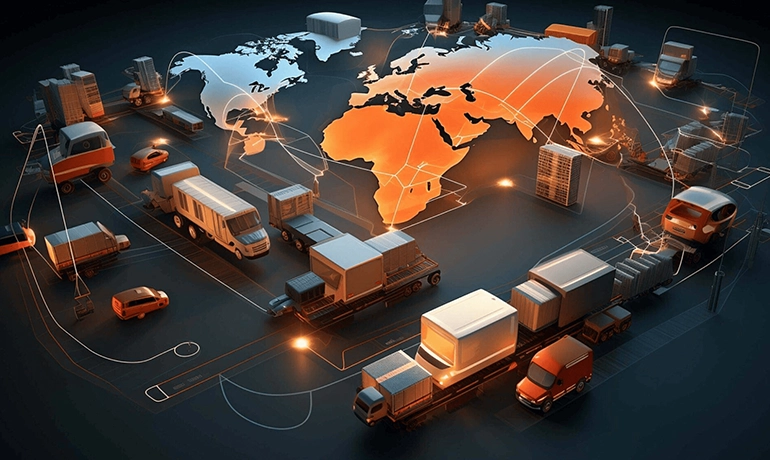How India Uses FTAs to Reshape Global Supply Chains
India's global trade role is rapidly changing. It is employing Free Trade Agreements (FTAs) to facilitate that. The agreements are not just a matter of selling goods. They assist in reshaping the movement of goods around the globe.
Following the pandemic, supply chains around the world changed. India is leveraging FTAs to become a greater part of this new arrangement. These agreements make it easy for Indian businesses to sell to more nations. They also facilitate other nations selling to India. This opens up new avenues for trade.

India's FTAs benefit more than enterprises. They form an integral part of India's agenda to consolidate stronger relations with other countries. This makes India an integral force in the global economy.
What Are FTAs, and Why Do They Matter?
Free Trade Agreements, or FTAs, are deals between countries. They lower or remove taxes and rules on goods and services that cross borders. This helps India in a few ways. Indian companies can sell their products more easily in other countries. It also makes things cheaper for Indian companies that buy goods from other places. This makes India an attractive place for global companies to set up their factories and supply chains.
India has more than 13 operational FTAs. These comprise agreements with:
- ASEAN (Association of Southeast Asian Nations)
- Japan (CEPA)
- South Korea (CEPA)
- UAE (CEPA)
- Australia (ECTA)
- SAFTA (South Asian Free Trade Area)
- UK (CETA)
India is also negotiating or reinitiating discussions with the EU, Canada, and the Gulf Cooperation Council (GCC).
FTA-Driven Changes in Global Trade Patterns
1. India-UAE CEPA: The Gateway to the Middle East and Africa
India and the UAE had signed CEPA in 2022. It has increased trade between the two to $85 billion during the 2023 to 2024 financial year (Ministry of Commerce and Industry). The agreement turned the UAE into a significant hub for Indian exports. A number of these exports continue onward to Africa and Europe through the Jebel Ali Port.
2. India-Australia ECTA: Indo-Pacific Linkages зуб (routes)
The Economic Cooperation and Trade Agreement (ECTA) between Australia and India eliminated duty on 85 percent of Australian products into India. It also opened up access to services for both nations. This redirected trade flows across ports such as Mundra and Sydney and enhanced India's Indo-Pacific trade security position (DFAT Australia).
3. ASEAN and East Asia: Consolidating South-Southeast Asia Supply Chains
India's FTA with ASEAN facilitated its integration into the supply chain network of East Asia. Goods such as electronics, machinery, and chemicals now flow under reduced duties from Singapore, Malaysia, and Vietnam to reach international markets.
4. Emerging Corridor: India-Middle East-Europe Economic Corridor (IMEC)
Announced during the G20 Summit of 2023, IMEC seeks to link India to Europe via the UAE, Saudi Arabia, Jordan, and Israel. FTAs provide the trade and legal basis for this corridor. IMEC promises to be a faster and more secure alternative to China's Belt and Road Initiative.
5. India–UK CETA: A New Corridor to Europe
India and the United Kingdom signed CETA on July 24, 2025. The agreement was signed by UK Business and Trade Secretary Jonathan Reynolds and Commerce Minister Piyush Goyal in the presence of Prime Minister Narendra Modi and UK Prime Minister Keir Starmer. The agreement includes goods, services, digital trade, intellectual property rights, labor mobility, and environmental regulations. It is India's most comprehensive post-Brexit trade agreement. It will more than double trade from about $60 billion to $120 billion by 2030 and be worth £4.8 billion per year to the UK's GDP. It will also attract a further £6 billion of new joint investment. It will help even smoother trade between India and Europe through UK ports like Tilbury and Southampton.
Impact on Indian Exporters and Logistics
- Lower Tariffs: Indian products are now more competitive in countries like the UK, the UAE, the Middle East, and Australia.
- Shorter Lead Times: Deliveries are faster due to better and more direct trade routes with FTA partners.
- Increased Investment: Global companies are opening offices and factories in India to use its FTA network.
- Logistics Hub Development: : Ports like Mundra, Nhava Sheva, and Kochi are expanding to support new trade routes.
The Road Ahead: What's Next?
India is negotiating new FTAs with:
- European Union (EU): Negotiations resumed in 2022 and are expected to touch upon a broad array of sectors.
- Gulf Cooperation Council (GCC): The negotiations are expected to develop trade in energy and services.
These new FTAs will further transform global supply chains. They will deliver stable tariffs, common rules of trade, and improved digital trade infrastructure.
Strategic Takeaway
India is expanding beyond being a mere trading partner. It is emerging as an important economic and strategic player. With intelligent FTA, India is increasing its exports and changing the direction and character of international trade. Policymakers, shipping lines, and companies need to adapt their strategies to capitalize on India's extended role in the global trade network.
Empowering Trade Growth with Sarvam Logistics
As India redefines global trade through FTAs, Sarvam Logistics stands ready to support businesses navigating these new routes. With our strategic port presence, agile operations, and global partnerships, we help clients move goods faster, safer, and smarter. Partner with Sarvam to stay ahead in India’s new era of trade-driven growth.
Sources:
- Ministry of Commerce and Industry, Government of India: https://commerce.gov.in
- Department of Foreign Affairs and Trade, Australia: https: https://www.dfat.gov.au
- Invest India: https://www.investindia.gov.in
- UNCTAD Trade Agreements Database: https://www.dfat.gov.au
- British Government press releases: https://www.parliament.uk
- Reuters: https://www.reuters.com